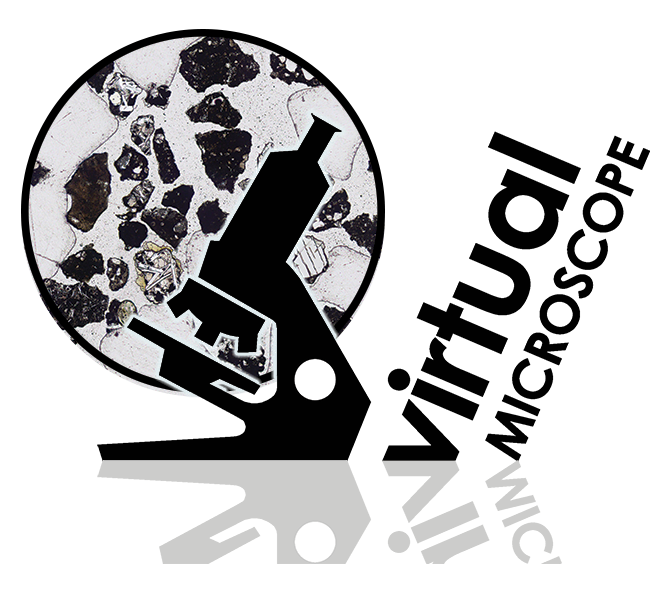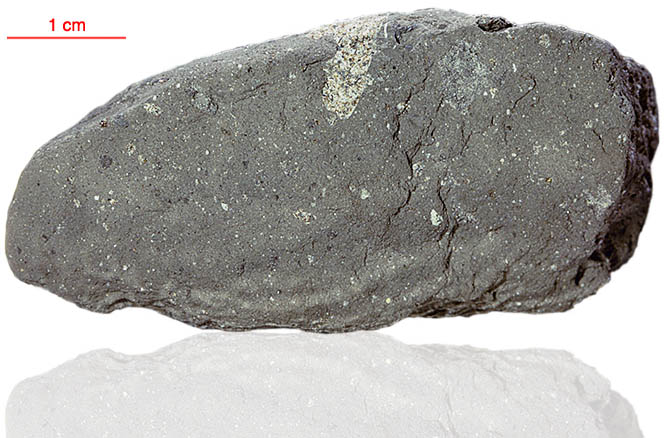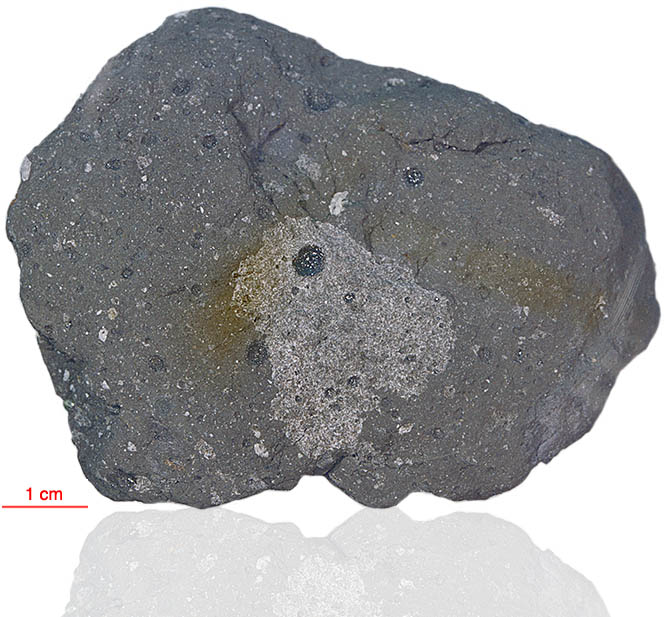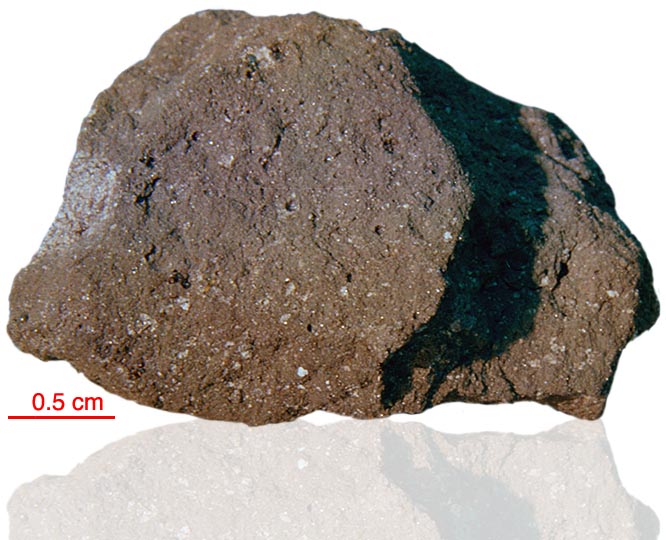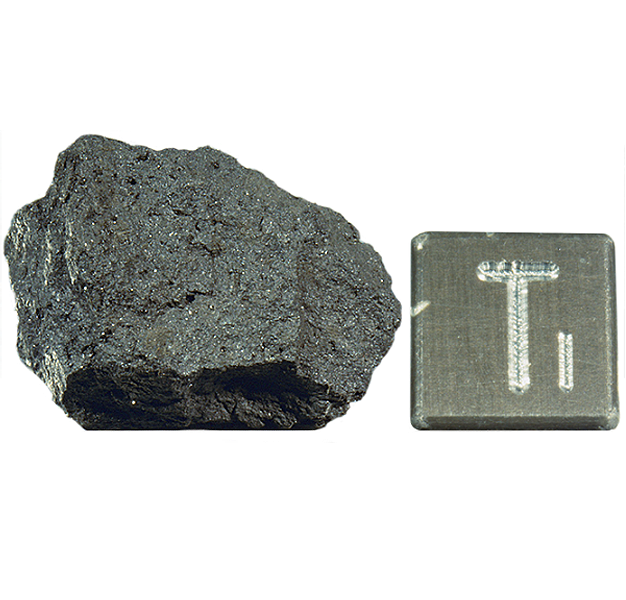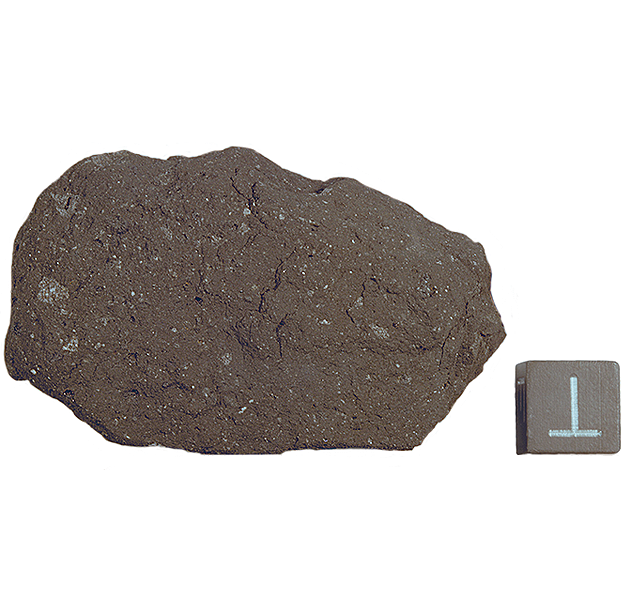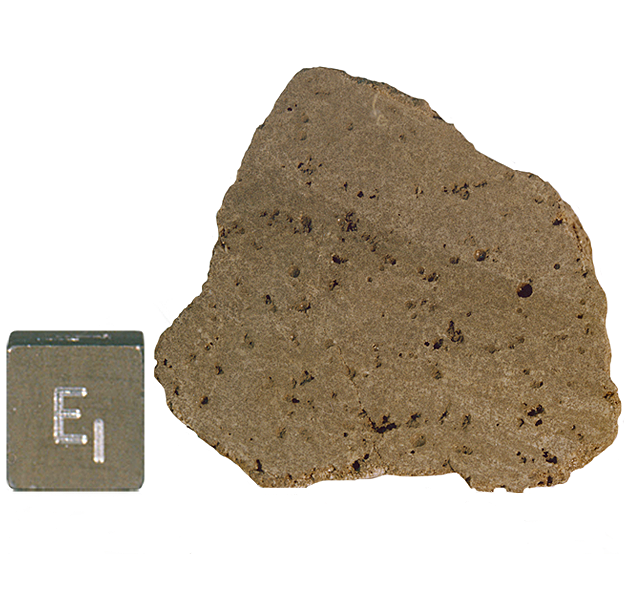
Fact sheet
10017 is the largest rock sample returned by the astronauts on the Apollo 11 mission to the Moon. It is a fine-grained, vesicular, ilmenite basalt that crystallised around 3.6 billion years ago. The entire surface of the sample is covered in micrometeorite craters (pits) indicating that since being exposed at the Moon's surface it is has rolled around to that all its faces have at some point been exposed. Scientists have determined that this sample has lain at the surface for 480 million years, so there has been plenty of time for local impacts to cause it to move.
In the thin section, the high concentration of Ilmenite in the sample causes it to have a high Ti content - enough for the sample to be descibed as a high Ti basalt. Other major minerals include plagioclase feldspar and clinopyroxene. Between this framework of crystals is an interstitial high K glass. The rock is vesicular, meaning that there must have been gas exsolving as it erupted, and has a heterogeneous teture caused by mineral segregations and differences in grain size. Troilite (an iron sulphide), cristobalite and phosphate have also been reported, although only in very minor amounts.
Further details of this and other Apollo samples are here: http://curator.jsc.nasa.gov/lunar/
The Apollo 11 samples create an iconic collection since they were the first rocks collected by humankind that were returned to Earth from another solar system body. The Apollo 11 team collected and returned 22 kg of rock and soil samples.
Apollo 11 launched from Cape Kennedy on 16 July 1969. An estimated 530 million people watched Armstrong's televised image and heard his voice describe the event as he took "...one small step for a man, one giant leap for mankind" on 20 July 1969.
